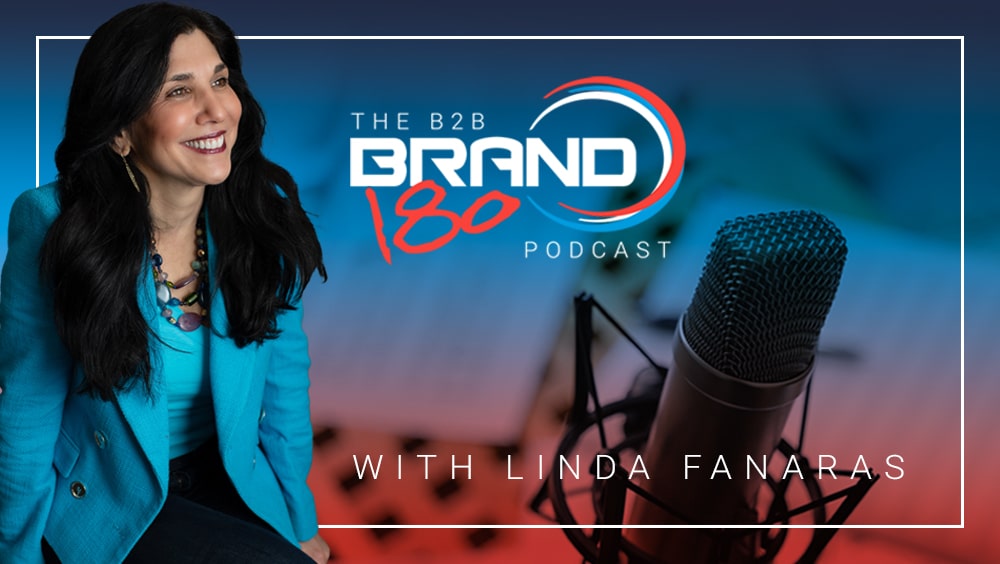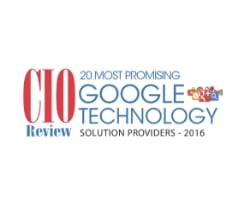In this episode of B2B Brand180, Linda Fanaras, CEO of Millennium Agency, interviews Harry Spaight, sales consultant and author of “Selling with Dignity.” Drawing from his mission background and competitive sales experience, Harry provides invaluable strategies to enhance sales performance and drive revenue growth. Join us to discover how selling can be a genuine act of providing value and the positive outcomes it brings.
Thanks for listening to the B2B Brand180 Strategy podcast with Linda Fanaras, CEO/Strategist at Millennium Agency.
Learn more about Harry Spaight’s book Selling With Dignity.
You can follow Linda at: https://www.linkedin.com/in/lindafanaras/
and Millennium Agency at https://www.linkedin.com/company/millagency/.
Linda Fanaras:
Welcome to the B2B Brand180 Strategy Podcast. Hi, I’m Linda Fanaras, host of B2B Brand180 and CEO of Millennium Agency. If you want to transform your B2B marketing into a powerhouse brand, then you may want to listen in. And if you like what you heard today, just click like share or subscribe. So today we’re going to talk to Harry Speight. He’s a renowned sales consultant, author of Selling with Dignity and keynote speaker and drawing on his mission background and extensive experience in competitive sales. He offers valuable insights to improve sales performance and drive substantial revenue growth. Harry proves that selling can be an act of service to others that will yield great results. So let’s get started. Welcome, Harry. Thanks for coming to the B2B Brand 180 podcast today.
Harry Spaight:
Linda, it’s an honor to be here. And I appreciate your attitude about podcasting. And I’m sure we’re going to have some fun today. So the short version of me is that I used to be I did mission work in places like Russia and Berlin, Germany, and a couple of years in the Dominican Republic. I got into sales. As a former missionary, typically not a lot of companies hiring that resume. So I pleaded and begged apparently, and someone felt sorry for me. But what ended up happening is after I was failing mightily in a sales bullpen for a number of months, I eventually started to get it that I could sell coming from a place of service. That would be my differentiator. And things started to click and I built a nice career, helped a lot of salespeople over the years because I eventually rose to becoming a VP of sales for a fortune 500 company. Everything was based on coming from a place of service. And I’m just here to help others to feel that selling can be clean and happy without feeling gross and icky as some people describe it. How does that?
Linda Fanaras:
That’s perfect. That’s a great way to put it because we remember the good old days when you were buying a car. Buying some sort of recreational vehicle and you get that hard sales pitch and you just walked away rolling your eyes. So things have changed. People have gotten smarter and they’re really not tolerating that as much as they used to. So we’ll get started. We’ll talk about some different, strategies that, companies can take advantage of or individuals who are interested in selling better, and building their confidence around selling with dignity. Let’s talk about your book a little bit because you had written a book called selling with dignity And I just want to ask you like what actually inspired you to write that
Harry Spaight:
book. During the whole COVID time period where some of us had a little more time to think and reflect on our lives and so forth I realized that 10 years earlier, I had said something to a friend of mine that I should write a book someday and combine my experience and show people how to sell coming from a place of service. Well, that came back to me during COVID, and I didn’t waste any time. I immediately started writing. The whole goal was. Look, I’ve helped people make a lot of money in growing their business over the years, but I really want to help the small business owners. The people who are creatives, the people who are on a mission, that have a purpose, that want to make the world a better place. I can help those people, I thought, and so that’s why I wrote the book. It’s really not for the people that already, the super strong salespeople, the strong closers. It’s for people who want to be better and just don’t consider themselves, quote unquote, a salesperson. So that’s the real purpose behind it.
Linda Fanaras:
So that’s how it’s a little bit different than some of the other sales books. I remember back in the old days, I had read that you probably have to those Ziggler books on how to sell and how to motivate people and so on and so forth. So this is a nice strategy because I also align with what you’re saying here today. So what would you say some of the challenges are entrepreneurs and sales people actually faced during the selling process?
Harry Spaight:
Yeah, the number one thing is that people disappear on him. I mean, it happens all the time where people show interest and then they disappear. And I asked someone recently in sales who was telling me this problem and I said, do your friends, disappear on you? He says, no. And I said, so you can’t think of any of your friends that disappear on you. He says, no, none. I said, okay, so what’s the difference? And he immediately connected the dots and he says, I guess my prospects are now viewing me as a friend. So from that point on, we talked about how can you provide value? If people know that you’re out to sell something, they’re not looking to buy something unless they have a need. So if you’re not providing value for them or for their business, then they know you’re there and when they need you. They might remember, but you stand a much better chance if you continually provide value for them, staying in touch, sharing something of insight for their business, maybe something that they like personally. Maybe they’re a Red Sox fan. I don’t know. I used to come from Massachusetts. Talk about, Hey, the Sox are having a wonderful season or not so much. Um, got tickets to the game or did you pick up something and, it’s just a little small talk and that way people don’t expect that every time you talk to them, it’s about you. Once they figure it out, it’s always about you, then that’s when they typically disappear. What’s your thought on that?
Linda Fanaras:
No, I agree with that, or, or, just the fact that you’re actually taking an interest in them as an individual versus them as a, uh, you know, an employee that works for a company, because, to your point, I mean, people have lives and people are people and we all, face a lot of the same things. So you don’t really want to be dealing with a salesperson that every time you hear from them or see them, they’re just going to ask you Hey, did you close that deal? Or, Hey, are you going to buy this from me? Because really, frankly, that’s a little, you know, it’s discouraging and it doesn’t really make for a good relationship. It makes for a little bit of a resentful relationship, I think. So how do you, you know, this, you try to nudge people along the process because I, you know, maybe somebody might have a little bit of interest. Maybe they don’t even have any interest. And you spoke a little bit about how you actually provide value. Maybe it’s an article. Maybe it’s something that you saw and that you want to share with them. Is that something that you, you start right from the beginning? Do you do it? Do you start it during a certain part of the sales process? How do you identify when you would start that? And then maybe when you would just give up and end
Harry Spaight:
that. I think right from the beginning is when you want to start showing value. So asking people about their business and, you know, the old question is what’s keeping you up at night? Maybe that’s stale, but you might say something like, what’s, what has your focus these days? You know, besides buying stuff for me, what’s really on your mind? And when they tell you, that’s when you want to make a quick note and then see if you could be a resource. And when they say this is where a lot of people will lose it, right? Because an example is someone, you might say, well, how’s business? And someone might say, well, it’s summer. So it’s a little slow. And well, what does that mean? What does that mean to the business owner that says it’s a little slow? Does that mean they’re now a little bit stressed? Are they concerned about payroll? Are they concerned about the business eventually stopping? You know, what’s going through their mind? We don’t know. So when we say callous things like, yeah, it’s summer. so the reason I’m here is. You know, it just shows that we’re not empathetic, that we’re not really listening, that we don’t care, and it’s all about us. So, being empathetic, we can then ask, yeah, I get it, business is slow at times in the summer. When you think of this, what’s top of mind for you? What comes up for you when you’re thinking that business is slow in the summer? Did you experience this last summer right and then you’re opening up the conversation and then when they give you something You can just ask what was that like or what do you think? The reason is it’s different or how does that impact you or tell me more? And we’re just putting out this where we’re extending the conversation and the longer we can talk about them, the more they build trust that we’re not there for ourselves. Once we start faking the listening, which is what some salespeople do, because they come across with these superficial questions and then, you know, they’re not really listening, they’re nodding. Right. And then, uh, they go right to themselves. Right. And people pick up on that stuff, because we’re all smart enough to pick up when someone is fake listening to us. And we say things like, that person’s a phony, and that’s not what you want to be. You want to be sincere, and genuine, and put yourself in their shoes, and say, If I was struggling to make payroll or I was worried about business coming in in months, What would I be thinking? And when we start thinking like that we can say wow, that must be tough right where we’re showing some empathy
Linda Fanaras:
Yeah, and that’s a great point because I think A lot of times that is what happens is that you get somebody that doesn’t, and I always say, you gotta listen more and talk less because the more you listen, the more you learn. And it’s really simple. It’s very simple, recipe for success as far as I’m concerned, because if you are able to take the time and listen to an individual and hear what they’re saying, then And maybe like read between the lines from time to time. You can come back to them with something that’ll actually bring value to them versus just starting up with your own conversation that will benefit you. So I totally agree with that. And I think that’s an important part of business just in general is to just listen more and talk less. and it’s a big part of that sales process as well. Yeah, that’s a great
Harry Spaight:
point. Yeah. A hundred percent on that. And you know, you mentioned something about reading between the lines. This is where that observation of body language comes in. And so when someone says, yeah, everything is fine. You know, you know, that they’re probably just not feeling like it’s a safe place for them to open up because they don’t want to tell you, right. There are certain things that people don’t want to share. So that that’s on us then, because we’re not making it a safe place. So the more we have the conversation and we are paying close attention, giving them eye contact, right, actively listening, which is nodding and being engaged versus, uh, uh, uh, and clearly, you know, just get through it so I can get back to my piece or I can meet. Right. Now you can then say after they share something, that’s when you show the empathy and that’s where, you know, they start to see that you’re different from others because they’ve already gone into any sales conversation, pretty much thinking, anyone that’s selling is pretty much the same. We’re all out. It’s all about us. So when you can show you’re different, I’m sure you do. I can tell. Is that we’re like minded here is that people look at you and say, yeah, she’s different. Linda’s different.
Linda Fanaras:
As far as the the hard sell tactics I I don’t know. I always do the eye roll because the reason why it’s so important to listen and do less talking is because An individual who’s on the other side, the individual that’s buying has very specific goals and objectives in mind. And if you’re busy talking, they’re not able to tell you or communicate those to you in an effective way that you’re actually able to address. So part of the whole process here, I think, to be successful is making sure, like we spoke about earlier, listen and try to uncover really in a deep way what those are. And then kind of come back with some solutions that will actually work for that person, because if they don’t get the, if they don’t have the time to get out their thoughts, they’ll be disinterested in you. So I think that that’s a key component and it’s a very simple recipe for success. So I, you know, I’ve had people come to me and talk about getting into sales or getting into marketing. And I’m wondering, and a lot of times people are like, Oh, I can’t handle the no, or I don’t know if I can handle the rejection or they get their first, no, or their second, no. And then the third, no. And they’re like, I’m not cut out for this. Probably what you had experienced. I mean, what do you say to those people that really are down and out and just have had enough and they’re ready to just throw in the towel?
Harry Spaight:
Well, yeah, you cannot succeed if you’re going to be bothered by the word. No, it’s just a fact of life in business. If you, you have to grow your business. You have to ask for the business. And if the word no intimidates you, you have to get over it and recognizing that this is the comparison I give. Do you like fine dining restaurants, Linda? Mm hmm. Me too. And I don’t know if the server has ever asked you if you like a, uh, to look at the wine list, or have a specialty cocktail, or ask about the dessert, and once in a while you might say, no, I’ll just have water, or I’m really stuffed, I don’t need dessert, but thank you. Does the server walk away dejected, saying, Oh my God, I can’t face another person saying no, right? The server just keeps serving and they smile. So the thing is about us in sales, if we just approach it where they serve it mindset, when people are saying no, it’s like, Hey, they just don’t want the dessert right now. It doesn’t mean they’ll never want dessert. It doesn’t mean they’re bad people doesn’t mean you’re a failure It’s just they’re not in the mood for what you’re selling today But next month or three months from now or a year from now They might be and so just respect that that people do not necessarily buy on our time frame They buy when they need something And if we continue to show that we’re there for them and serve them Who are they going to think of when they actually need the product? Just like in your
Linda Fanaras:
business. Exactly. And I think that’s a great point because in the agency business that we’re in, obviously we’re often up against other agencies and it’s quite competitive. So if we lose out, some agencies are like, oh yeah, well we didn’t want your business anyway. Well, I have a, I have a different philosophy around that. Smart. My feeling is, If you can maintain a positive connection with whoever you’re working with and say, Hey, sometimes you might be like a strong second or even a third, we find that, you know, sometimes it doesn’t work out with a selected agency. We’re here to help you when things. All by the wayside. We want you to know that we can pick up wherever they left off. You wouldn’t be shocked at how many clients come back to us for that. So they just have to experience some of the pain on the other side. And then as long as they know, okay, these guys, I think I can work with them. They seem open minded and transparent. I’ll give them a call. And then we start that relationship from there. So I think that’s an important thing for salespeople to keep in mind is to rise above it all and just be positive and try to have a smile. Like, like you said, be a good waiter or waitress and just have a smile on your face no matter
Harry Spaight:
what. Yeah. And be understanding because we’ve all made decisions to go a different direction when we’re talking to a salesperson, a salesperson might be trying to sell a car to us. We say, I want a different direction. If we hear you total loser, do you know how much time I spent on you? You know what? I already spent the commission check. I can’t believe you did this to me and they throw all that stuff back We’re just making sure that we’ll not do business with that person again. Exactly, right? So why do that? I mean i’ve been around sales people doing the same thing and I shake my head. It’s like Are you just like cutting off your nose here? This is the perfect example Because you don’t want to wait a year for them to try out something and maybe that doesn’t work and you can sell something a year from now. Why would you do that? Exactly, exactly.
Linda Fanaras:
No, it’s so true. So sales training, I think is great. And I’ve, you know, done that over the years and coaching. So can you tell me why it’s so valuable either, even for somebody who’s experienced and maybe somebody who’s inexperienced, explain to me the value behind that and how it sort of expedites that learning process, versus, falling down on your face year after year after year.
Harry Spaight:
Yeah, absolutely. Thanks for the question. So if you think of like anyone who is a dentist, doctor, I mean, I’m hoping that any doctor or dentist I visit is staying up to date. With what modern practices are, you know, if you walked into a dentist’s office and it looked like it was decorated for the 1970s with shag carpets imagine they come over, no gloves and no mask. They did when I was a kid. It’s a hundred years ago, but no one wore gloves and no one wore a mask is like if the dentist had bad for imagine if they’re doing the same thing and they said, well, I’ve been doing this a long time. I know how to do dentistry. Okay. You know how to sell probably, but are you current? Do you understand what permission based selling is? Do we understand what your personal branding is now? Do you understand how to provide value? I have a dog barking. I apologize for that. That’s okay. Yeah. So providing value, massive value, even not just providing value. People say, well, I’m providing value of my product or service. Now, are you providing massive value to your prospect so that they actually look at you as a resource for their business versus a salesperson? You’re not able to say yes to that question and say, Hmm, last time I spoke to someone who asked me about what’s going on in the world in their business. Uh, was like never. So maybe we might want to improve on some of our business acumen and some skills. And there are some simple ways you could do that. And that’s why I help people.
Linda Fanaras:
Oh, that’s fantastic. I think that’s great. Helps expedite the whole process, the whole learning curve. So before we go to our next question, I just wanted Take some time and thank the audience for listening in today. and you can help us grow our channel by liking, subscribing, and sharing B2B Brand 180 Podcast with your colleagues. So thanks again. Okay. So Harry, I have a few more questions for you. I think one of the interesting points that I wanted to cover is there are a lot of nuances of different personalities, as we know, and relationships that successful salespeople actually kind of get, and they understand, and they know how to use those personalities and those little nuances to their advantage and bring in new business. What are some of those key points and maybe how would. a new salesperson overcome some of those challenges.
Harry Spaight:
Yeah, that’s such a great question. Well, there’s a number of tools out there that will help. I mean, the DISC personality profile is one. There’s another one that’s called Code Breaker Bank that basically it divides, puts people into one of four main categories. Is the person a dominant personality or are they in the code breakers? It’s, does the person take action quickly? You know, people like, uh, give you an example, a person I, uh, was, was trying to sell me insurance one time. It’s very analytical and I’m an action person. So I was basically saying, what do I need? And person gave me no less than five different options. And I’m looking at the options and I’m thinking, why are you making this so complicated? And we’re off like 20 a month. I mean, I don’t care if it’s 20 or if it’s 18 or if it’s 22, that doesn’t matter to an action person. The action people are the people that are making decisions quickly that are saying cut to the chase just tell me what I need Those are indicators that they don’t want to be bogged down with 73 choices About what are the different programs you offer and then there are people that are very analytical and you know, you know in a conversation You’ll ask, for instance, when you buy a new car or look at, uh, you know, a new washer and dryer, what goes into your process? Are you a person that compares a lot of different things? Really shops through all the details? Or can you walk into a Lowe’s and just say, I want the white one. And that will give you an idea if they are going to be very analytical. Which means you better continue to provide a lot of information with those people and be very patient because they are going to analyze versus the people that are quick decision makers and then there’s a lot of in betweens, but those two will get you going. Right. If you can just say quick decision maker, analytical, you’re going to treat them differently. That will get you started.
Linda Fanaras:
That’s actually a good point because I think sales people might get a little impatient with the analytical people and if they don’t identify that like immediately, then it’s like, okay, then that could just. And the sale and the potential of a sale. So that’s a good point that you that you brought up is that if you notice that they’re analytical, put on the brakes a little bit, provide the detail and the research and the data that they need. So they feel like they’re making a decision based on information, versus somebody that’s going to make a quick decision based on maybe gut or, you
Harry Spaight:
know, referral.
Linda Fanaras:
So that’s great. Yeah. Um, You know, it’s interesting as from a salesperson’s perspective, because they are, I mean, I think You know, a lot of people want to be real during the selling process. They want to be authentic. They want to care about their, you know, customer. But on the other hand, they’ve got corporate bearing down on them for quotas and sales numbers to meet last quarter’s numbers. So how do they, how do they find that balance between meeting those targets and actually, actually being a genuine human and serving their customers
Harry Spaight:
properly? Oh my goodness. It sounds like you have experience in that one, Linda. Did you come from that background? It’s such a great question.
Linda Fanaras:
Yes, the answer would be, the answer would be yes.
Harry Spaight:
All right. Well, yeah. So I worked for a publicly held company and I had the same philosophy back then. Do, do we need to close business every month? Yes. Do we have to forecast for the quarter? Yes. You don’t sacrifice the relationship with the customer in order to get business. Never. So you just have to bite the bullet and say, you know, they, my forecast is off. They decided to wait and you just have to do what you have to do because you cannot force someone. Last time I checked, you cannot go to someone’s office, take a pen or give them a, uh, a docu sign. Say, sign this today because my quarter depends on your business. They don’t care. They care about them. And if we misread it, I mean we mis, we misread it. But I would do, over the years, of course, I would ask like if, uh, as a leader of a sales team, I would say, oh my goodness. I would ask the sales team who’s got a deal that’s stuck and can I make a call? And I would take the pressure off the rep and I would just ask a question. Is this look pretty good for you? And they say yeah, and I’d say, uh, what’s your time frame for taking delivery and they say well in a couple weeks It’s a great we’re absolutely here for you in a couple weeks And I got a quick question for you And then I would ask is there any way if we could do a little sweetener that you’d be able to take delivery? Before the end of the month. Mm hmm. And they say well, it depends on the sweetener something along those lines, right? Right, and it would be give away something to make them feel good not cut you. Yeah in half But make them feel good to help you drive your revenue. Yeah, what’s your thought on that? Does that sound fair? I think that’s a
Linda Fanaras:
good tip. I think that’s great. If you were to fast forward a little bit, how do you see the sales? changing. I mean, with AI and taking advantage of that through different types of platforms and email marketing and LinkedIn. And it removes that personal touch that we all like. how are you seeing that in the future?
Harry Spaight:
Oh, I totally believe that sales is going to be around as long as there’s people. If we look at selling as As part of persuading, as part of serving, even if there’s like chat GPT is awesome. I use chat GPT for love it. However, if I put out the best content or someone else puts out the best content, I have to read it. And if I don’t read it, it doesn’t, I miss, it’s sort of like having the billboard in the desert. No one’s seeing it. So having somebody in sales, getting the message out, communicating, networking, calling on a specific market. for instance, marketing might be, well, I’m going to call on HVAC people, or I’m going to call on people who live in nice homes or my business or whoever your avatar is when I say call on. There has to be some connection to get you in front of those people because not everyone has the desire to read or to listen or to watch video, but it’s like you can pull in relatively inexpensively if you do sales the right way. It’s just by networking and having conversations with people and saying, so Linda, what’s your focus on your business this year? And you start sharing. It’s like, well, I’m really looking to cross sell or get more business out of my current clients and then you’re building the trust and relationship. Then say, I’ve got a tool after a while, not right off the bat, but after there’s a lengthy conversation, I can share you a, share a couple of thoughts if you’re interested in exploring this a little bit further, right? Yeah. Like, Oh, okay. Well, the copy may be out there. Could be on your website. Could be on Facebook. But if I don’t see it. You know, that’s a real simple thing. It’s like, I don’t think it’s going to go away. So maybe if we all become robots someday, but I don’t think that’s any time soon.
Linda Fanaras:
I don’t know. Maybe. So, let me ask one last final question. What would you, what would you say the one tip is you can provide as sales listeners today that will help them in the long run? Like the biggest tip, maybe something that you learned. I know we already talked, we did talk about rejection. We talked about listening, we talked about different types of personalities. Is there something else that you think you could share with our audience that would be a great, takeaway?
Harry Spaight:
Yeah. There’s, one that comes to mind. I don’t know why, but it’s, you have business inside of your funnel or in your pipeline and your group of people that maybe you’ve sent proposals to in the past. And they didn’t do anything. There is business there. And most, many don’t follow up with those people because they said no, or what? They weren’t ready. And so they moved on. Those people will eventually buy from somebody. And so I call it stir it, stir the pot. Get in touch with them, find them on LinkedIn, wherever, and just say, it’s been a while since you and I spoke. I’d love to catch up to hear what you’ve got going on these days and see if I can be a resource for you and be a resource, right? Yeah. That’s great. Yeah. Don’t think about the sale.
Linda Fanaras:
I guess what I was thinking is if you think about the salesperson and that hunter mentality, they’re just like, okay. They didn’t close next. They didn’t close next. They didn’t close next. So, really what you’re saying is just stop for a minute and go back to that list of nexts. People that said no and try to get them going again because maybe they, like we said earlier, maybe they’re not happy. Maybe they have another project. You just never, never know.
Harry Spaight:
Maybe they didn’t make a decision. Maybe we just gave up because they said they were going to go a different direction. But shockingly, people get busy and don’t make the decision. They think they do, and then they don’t, and then they’re still sitting out there and then you’ll find out that they never did anything again. Don’t jump down their throat. Like, is there a great opportunity? Think about how you can serve them. What is it that they need? And provide some value, whether it be a network connection, maybe it’s a comment on a LinkedIn post, maybe it’s an article about the future of AI, something that is valuable. And when you do that and stir the pot without looking like you’re selling something, People will connect the dots. They know what you do. They will remember. You don’t have to say, Well, I don’t know if you remember me, but six months ago, you, you, you turned me down. You don’t want to go there, right? They remember and just provide value and totally surprise them and get that conversation and be genuine and treat them like they’re brand new and you’ll be shocked at some of the business that starts to get developed.
Linda Fanaras:
No, that’s great. That’s fantastic. All right. Well, thank you very much, Harry. and thank you to the audience today for listening in today, and thanks for all your sales insights. So Harry, I would love for you to share with the audience how they can get in touch with you, how they can find your book, maybe how they can learn about your services.
Harry Spaight:
Yeah, absolutely. If they want to find me, I’m real easy to find on LinkedIn. Um, if you just look up selling with dignity, I’m pretty much the only one there with that. And if you go to sellingwithdignity. com, you can get a free download of a book preview. Um, and then, you know, we’ll go from there. We’ll have a conversation if you want, and no pressure, no obligation, see if I can help solve a problem
Linda Fanaras:
fantastic, Carrie. Well, thank you. Yeah, thanks. Thanks for joining me today. It was great to have you. I’m always interested in sales strategies and insights. I just think it’s such an interesting, um, you know, career. And I even say it to my kids. I’m like, okay, if you want to succeed in life, you need to go into sales and just get rejected because once you get through that, you can pretty much get through anything.
Harry Spaight:
It is, it’s a skin, skin thickener
Linda Fanaras:
for sure. Yeah, it gets thick after that. So anyway, let me take a moment and, thanks. Thanks again for tuning in to B2B, Brand 180. And we hope you found the insights and strategies shared today valuable for your business. Again, I’m Linda Fanaras, host of B2B Brand 180. And if you’d like to find us, just visit us at mill, M I L L dot agency, or feel free to email me directly at L Fanaras, which is F A N A R A S at mill, M I L L dot agency, or simply just connect with me on LinkedIn and just search for my name. So just to help our channel grow and educate more B2B leaders on brand strategy and sales, feel free to click. Like, share or subscribe. And thanks again for listening until next time. Happy sales and marketing.





























